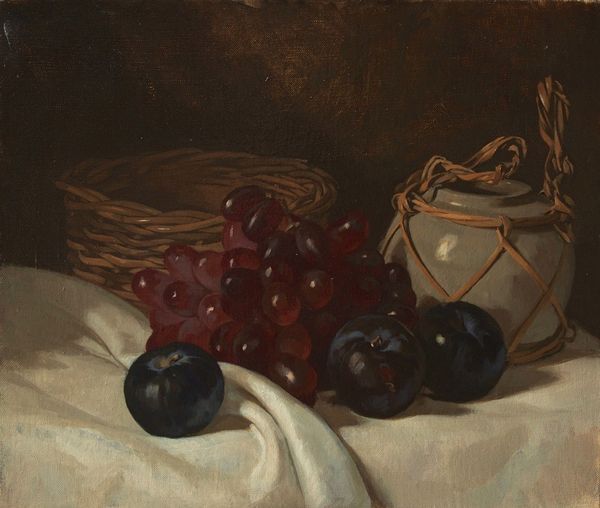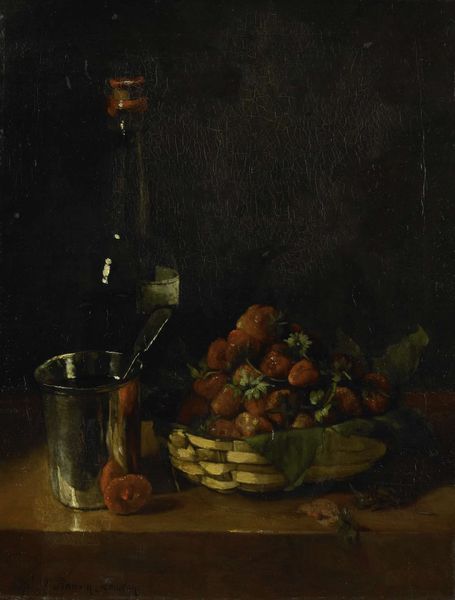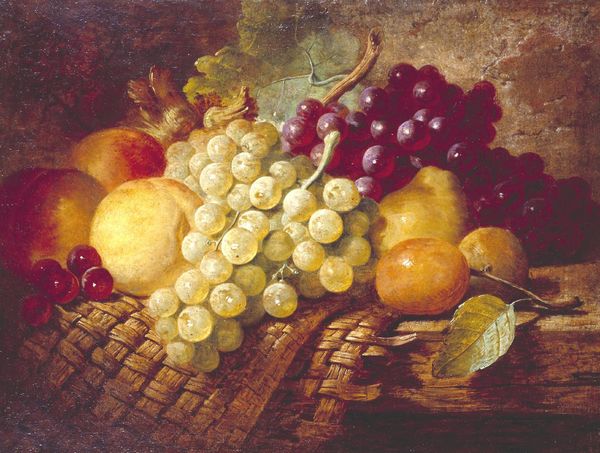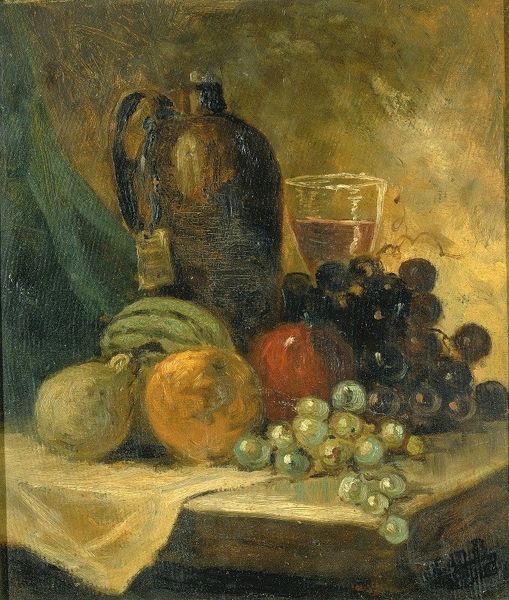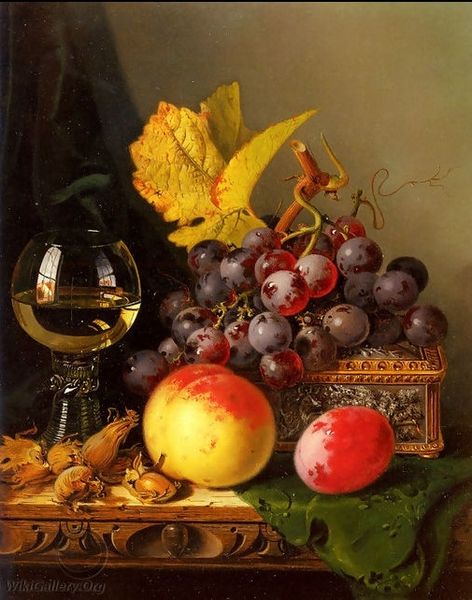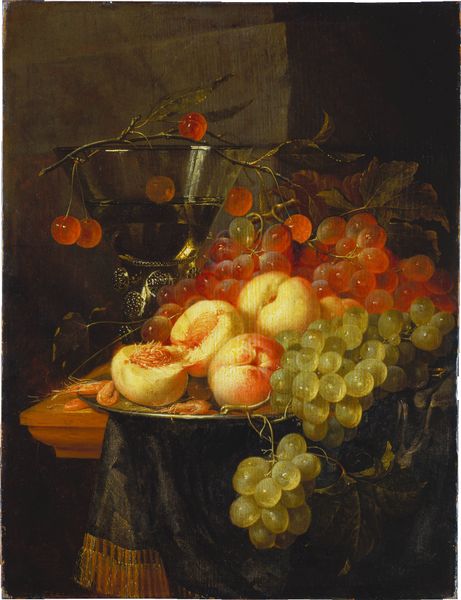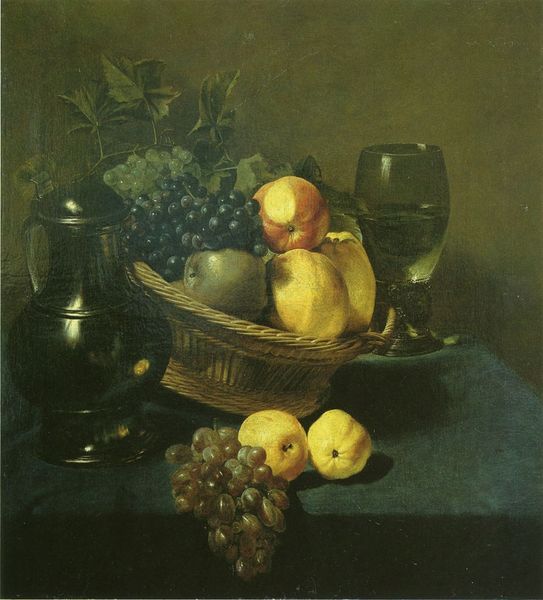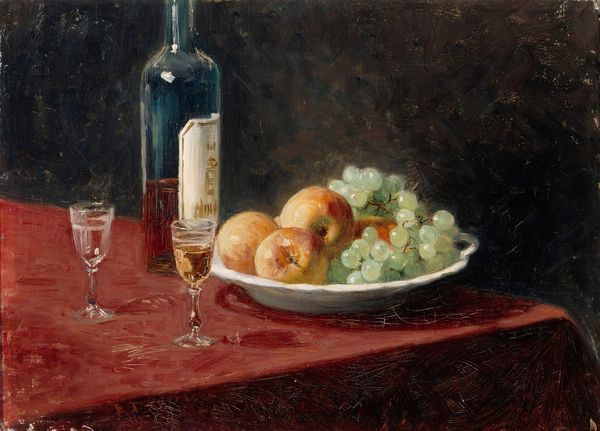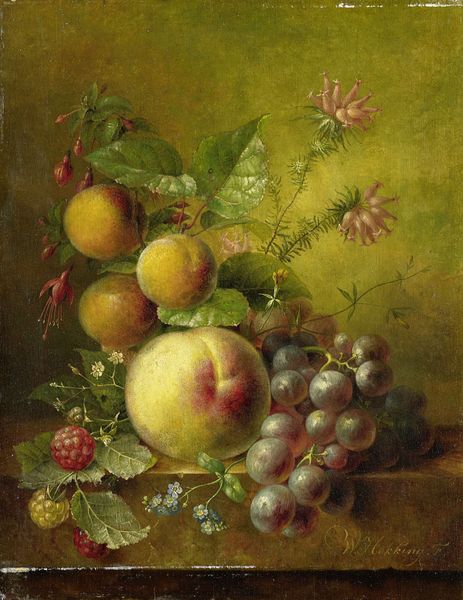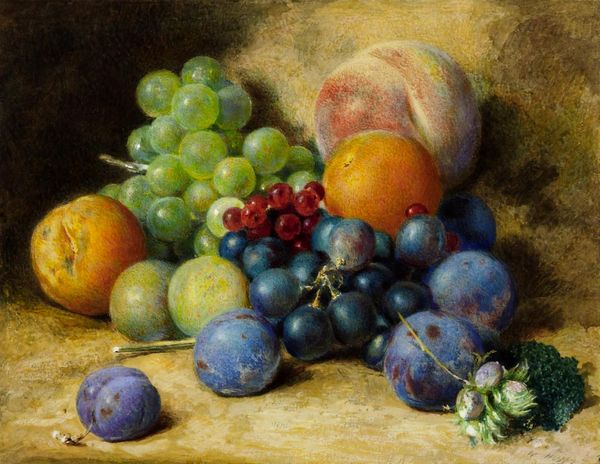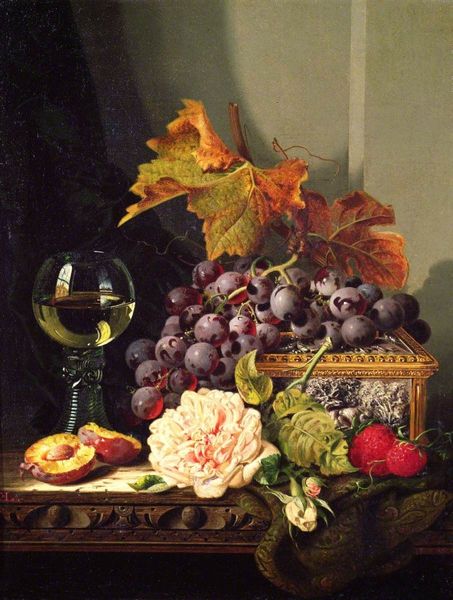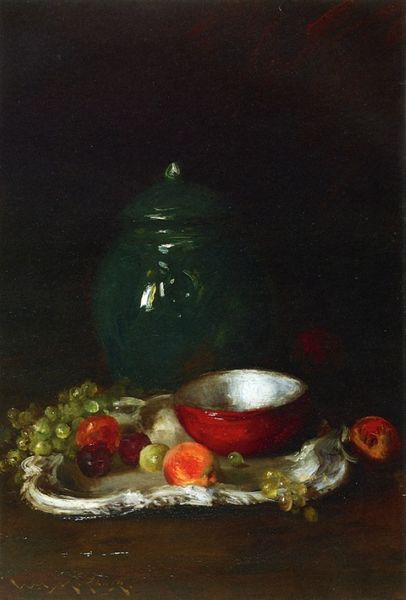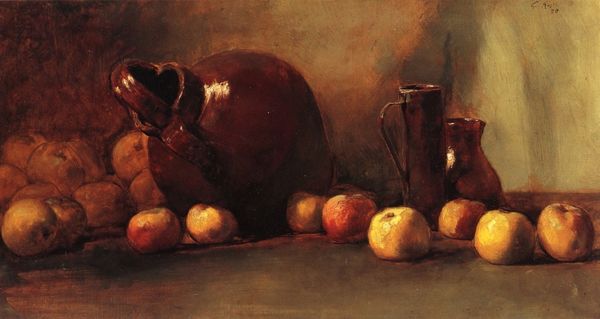
oil-paint, photography, impasto
#
still-life
#
gouache
#
impressionism
#
oil-paint
#
photography
#
oil painting
#
impasto
#
watercolor
#
realism
Copyright: Public domain
Editor: This is Emil Carlsen’s "Still Life with Grapes & Pewter Flagon," painted in 1890. The dark background makes the pewter and fruit feel almost staged. How should we interpret the scene? Curator: In the late 19th century, still life wasn't just about representing objects; it was deeply intertwined with the socio-economic climate. Do you see the way the pewter flagon is positioned so prominently? It wasn't simply a decorative choice. Editor: Right, it does command a presence! Curator: Exactly! In Carlsen’s time, there was a burgeoning market for luxury goods fueled by industrial production. How do you think the rising middle class might have viewed an image like this? Editor: Perhaps as a symbol of attainable sophistication? Like a catalog page come to life, showcasing aspirational goods. Curator: Precisely! Museums began curating and displaying such art, solidifying their role in shaping public taste and legitimizing certain kinds of material culture. Notice the way grapes – often associated with wealth and privilege – are painted almost naturalistically? Editor: Yes, they seem carefully placed, a mix of realism and romantic ideal. Curator: It makes you think about who these images were designed to appeal to, and what kind of lifestyle was being promoted, doesn’t it? Editor: It’s amazing how a simple still life opens up these discussions about art's connection to society and even the creation of the art market. Thanks! Curator: My pleasure! It's vital to remember art doesn’t exist in a vacuum.
Comments
No comments
Be the first to comment and join the conversation on the ultimate creative platform.
